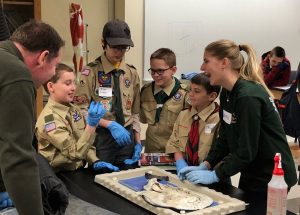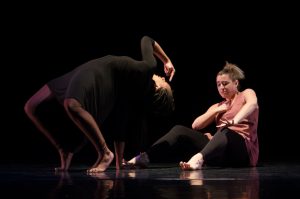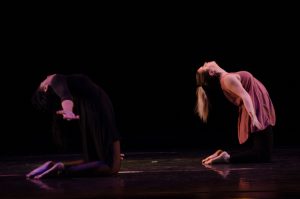Economists are uniquely suited to study a variety of subjects where tradeoffs are unavoidable and consequences are complex. Two such areas of unique econometric study are related to the law and the criminal justice system. Within those subjects, curious economists like Dr. Sarah Estelle, associate professor of economics at Hope and the Ruch Faculty Fellow, are able to ask and find answers to causal, cost-benefit questions such as this:
Do harsher criminal sentences cause more or less crime?
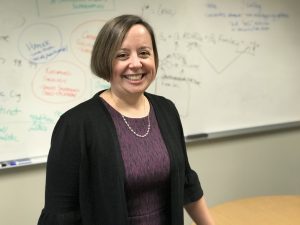
A recent study completed by Estelle and former Hope colleague Dr. David Phillips, now of the University of Notre Dame, found harsher sentences do not always reduce recidivism. Their findings, published in the Journal of Public Economics, used a massive Michigan Department of Corrections data set on two non-violent felonies committed by adults in the state — operating while intoxicated (OWI) and first-degree retail fraud. Since those two crimes are treated much the same in terms of the state’s sentencing guidelines, Estelle and Phillips wanted to measure the effect of offenders’ sentences on their future criminal activity.
After extensive study, they found harsher sentences reduce future felonies committed by shoplifters but not by drunk drivers.
“With the recent call for ‘smart justice,’ as opposed to the ‘tough on crime’ mantra of politicians of the 1990s, people are understanding that there are sometime tradeoffs between public safety and the public budget,” says Estelle, who is also the founding director of Hope’s Markets & Morality student organization. “Putting someone in prison in Michigan costs a hundred dollars a day. And that’s just the cost to the state. What about other costs to society such as the effect on a child’s development of an absent parent or the loss of income and stability for a family? We need to consider more than a state’s budget when assessing the costs of incarcerating people or, alternatively, not incarcerating them.”
“The ultimate question would be this: What would perfectly balance all of the consequences of a harsher versus more lenient sentence for society, for the offender, for the offender’s family, for the public budget? To really answer a question about the optimal sentence, we would have to capture all of the information that affects those various factors and put them together mathematically and then recommend an answer. Frankly, no one can answer that question, but a solid economic methodology can help us better understand the question.”
In the end, the two economists concluded “maximizing the public benefits of sentencing reform requires carefully identifying which offenses and offenders to target for reduced versus increased sentencing guidelines,” according to their paper, “Smart Sentencing Guidelines: The Effect of Marginal Policy Changes on Recidivism.”
Estelle includes her research smack dab in the middle of her Hope economics classes, too, so as to achieve two objectives: remind Hope students that their professors are active scholars and provide effective examples on course topics.
This research is consistent with Estelle’s interests in microeconomics applied to individual human behavior. In the past, she has looked at welfare policy and how that affects low-income women’s decisions to go to college. She’s also researched how women’s decisions to attend college affects their own children’s academic achievement and how parenting influences adolescent risky behavior.
“All of these things probably sound very sociological in nature, but they are actually smack dab in the middle of some really awesome economic research,” she says.
Estelle includes her research smack dab in the middle of her Hope economics classes, too, so as to achieve two objectives: remind Hope students their professors are active scholars, and provide effective examples on course topics. She uses her recent recidivism research, for example, in her “Economics of the Public Sector” class which aims to build students’ understanding of the causes and consequences of government involvement through spending programs (such as education, health care, and Social Security) and taxation.
“Although the criminal justice role of government primarily belongs in courses on ‘law and economics,’ our research provides a great example of just how complex cost-benefit analysis is,” Estelle explains. “Students might think ‘well, where incarceration is concerned, there is the cost to the state’s budget and there are benefits to keeping the public safe.’ But that would be a really bad cost-benefit analysis. The question really is, if we want to figure out what the sentence should be, what categories of consequences do we need to consider under the headings of benefits and costs? I think this is something that students have some traction with as they can expand their thinking and step beyond those first two obvious kinds of consequences.”
“Finally at the end,” she concludes, “there is pride in the finished product and sense of satisfaction in being able to make a contribution.”
In the capstone class in the economics major, a senior research project, Estelle also applies wisdom learned from her recent research in another way. As Hope students undertake their own independent research projects, Estelle instructs through her personal research, stories of inquiry that are tinged with a good deal of tenacity. It took her and Phillips four years to complete their study so “I can talk to my students about what provides motivation at different points in the research process. There’s curiosity and excitement at the start and there’s some of that in the middle with a good dose of obligation and commitment to intellectual integrity, too.”
“Finally, at the end,” she concludes, “there is pride in the finished product and sense of satisfaction in being able to make a contribution.”


 Twelve years ago Karima Jeffrey of the English Department and I offered a course at Hope called “Vocation, Spiritual Identity, and Comic Book Heroes.” It was exciting to blend our backgrounds and interests—Karima—a young African-American English Professor and myself a mid-career and white Professor of Religion and European History. Both of us had read Marvel Comics as teens and we were now aware that the Marvel movies were exciting a new generation of readers and viewers.
Twelve years ago Karima Jeffrey of the English Department and I offered a course at Hope called “Vocation, Spiritual Identity, and Comic Book Heroes.” It was exciting to blend our backgrounds and interests—Karima—a young African-American English Professor and myself a mid-career and white Professor of Religion and European History. Both of us had read Marvel Comics as teens and we were now aware that the Marvel movies were exciting a new generation of readers and viewers.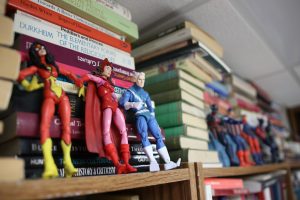
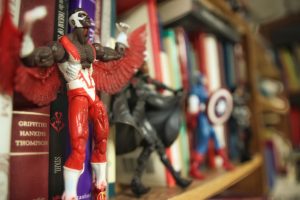
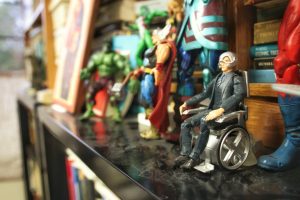
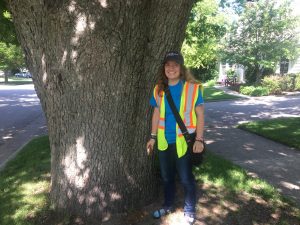
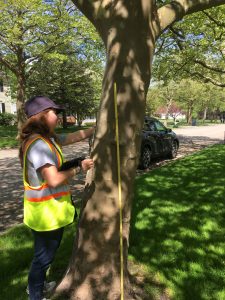

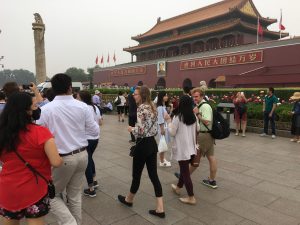
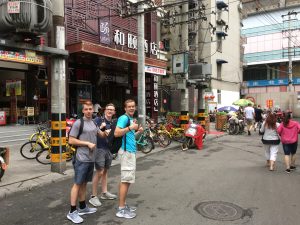
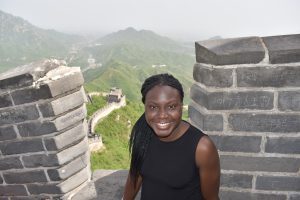


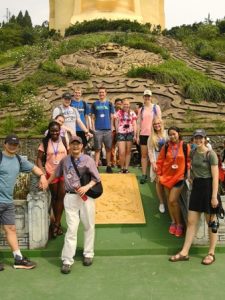


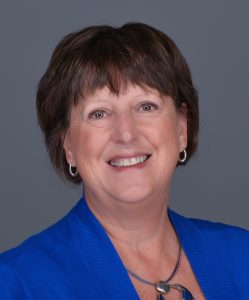
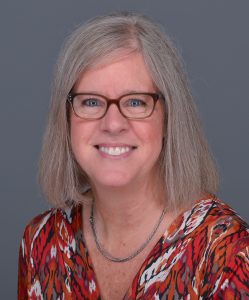
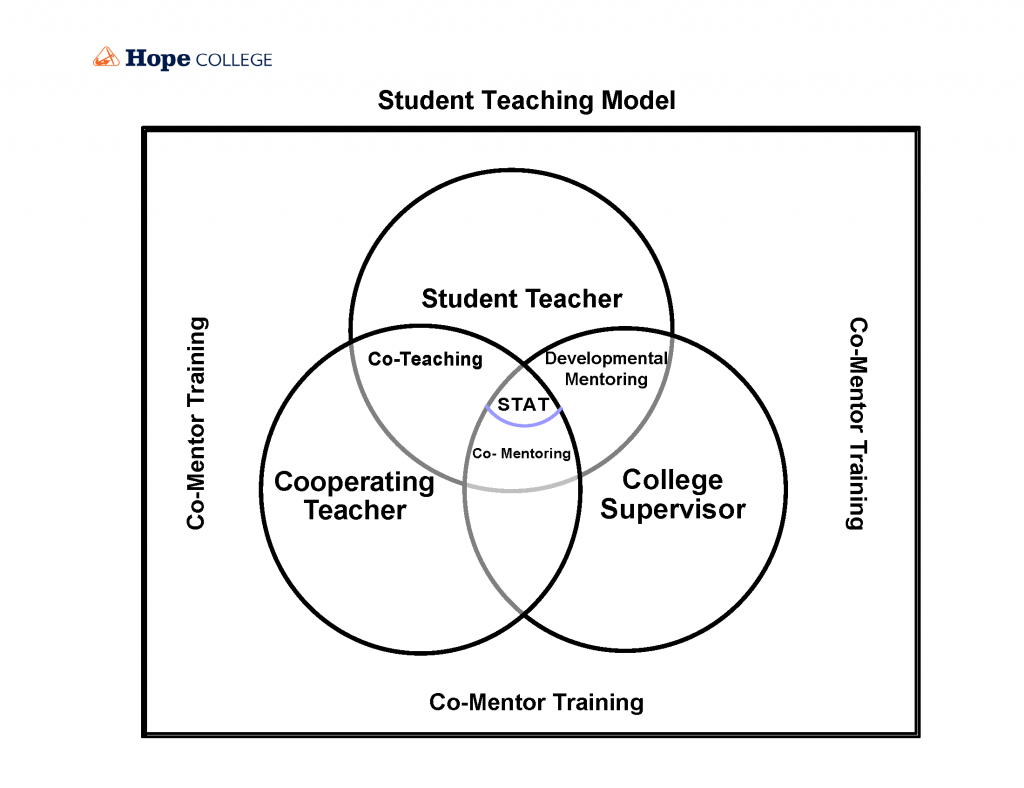
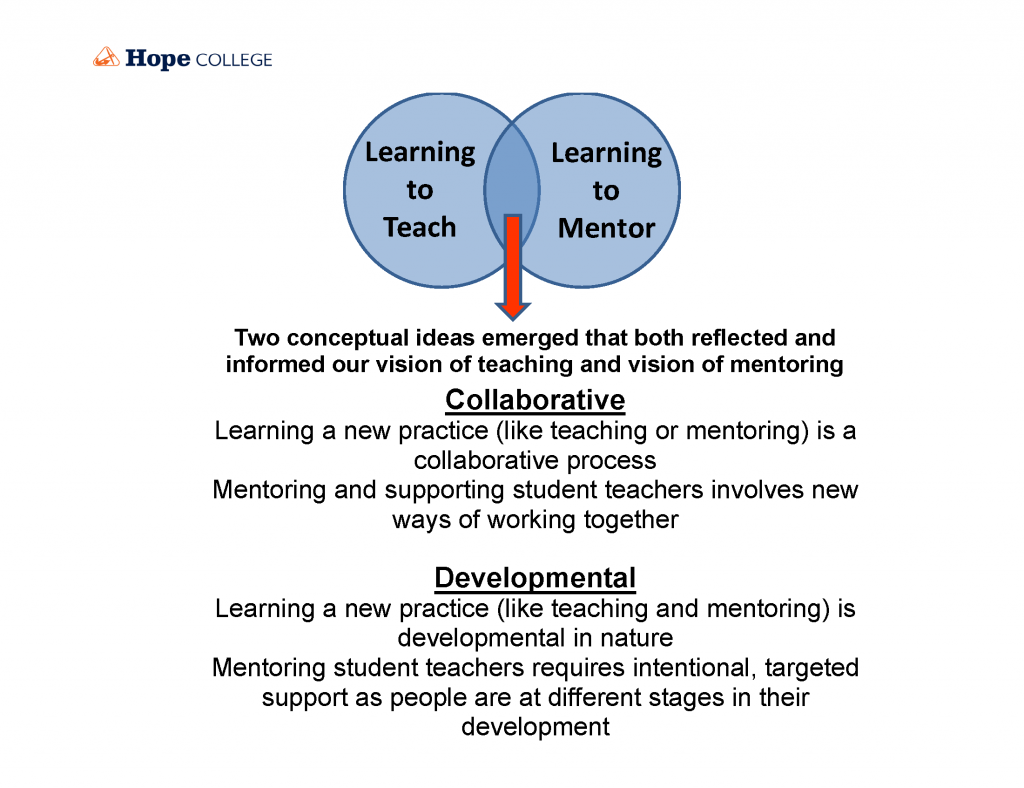
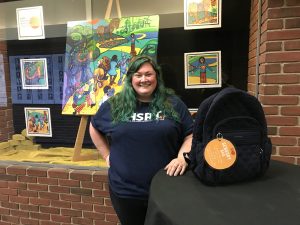
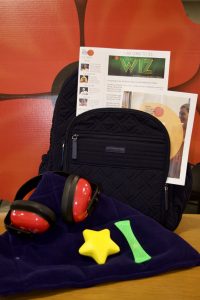 Supplied by accessory giant, Vera Bradley, the sensory bags are equipped with supplies that help patrons adapt to live theatre. Inside each soft, quilted, durable backpack are noise-dampening headphones, a squeeze stress ball, fidget tool, weighted lap pad, and buttons that say ‘please don’t talk to me’ so a person isn’t approached for audience participation if they don’t want to be. Ten bags are available to checkout at the DeWitt Theatre for every performance of “Dragon Pack Snack Attack,” “The Wiz,” “Godspell” and “The Odd Couple” at no cost.
Supplied by accessory giant, Vera Bradley, the sensory bags are equipped with supplies that help patrons adapt to live theatre. Inside each soft, quilted, durable backpack are noise-dampening headphones, a squeeze stress ball, fidget tool, weighted lap pad, and buttons that say ‘please don’t talk to me’ so a person isn’t approached for audience participation if they don’t want to be. Ten bags are available to checkout at the DeWitt Theatre for every performance of “Dragon Pack Snack Attack,” “The Wiz,” “Godspell” and “The Odd Couple” at no cost.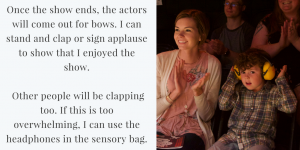 Written in the first person, HSRT’s “Going to the Theatre” social story walks patrons through the theatre experience from beginning to end — what door to use, where the ticket office is located, who helps you find your seat, what an intermission is, and how to exit. Though this tool was specifically created for patrons with autism and developmental differences, “we’re hoping that it has an impact on other patrons,” says Chesnut. “Some people maybe have never been in the theatre before, and it can be nerve racking. Basically, we want to bring down any barriers to theatre and we’re trying to do that with this kind of outreach.”
Written in the first person, HSRT’s “Going to the Theatre” social story walks patrons through the theatre experience from beginning to end — what door to use, where the ticket office is located, who helps you find your seat, what an intermission is, and how to exit. Though this tool was specifically created for patrons with autism and developmental differences, “we’re hoping that it has an impact on other patrons,” says Chesnut. “Some people maybe have never been in the theatre before, and it can be nerve racking. Basically, we want to bring down any barriers to theatre and we’re trying to do that with this kind of outreach.”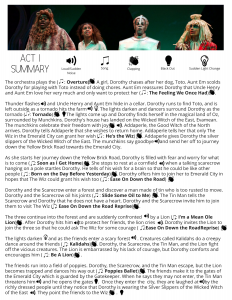 Finally, performance guides walk patrons through the particular sights and sounds of each play with a detailed, chronological summary of the action using icons for sensory triggers. They have been customized for each particular play and indicate when loud noises will occur, or when the house will go dark or suddenly bright, or when anticipated applause or audience participation should happen.
Finally, performance guides walk patrons through the particular sights and sounds of each play with a detailed, chronological summary of the action using icons for sensory triggers. They have been customized for each particular play and indicate when loud noises will occur, or when the house will go dark or suddenly bright, or when anticipated applause or audience participation should happen.